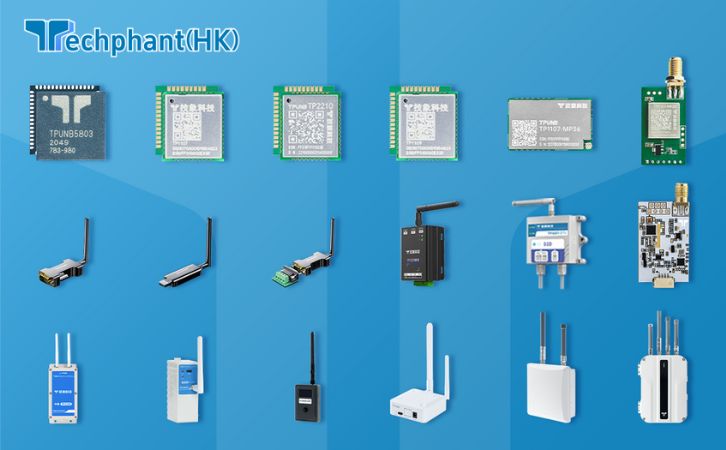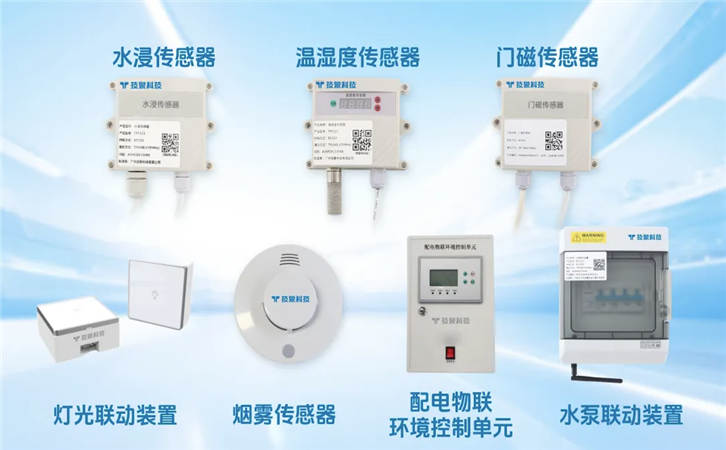I. Introduction
The Internet of Things (IoT) has revolutionized industries and daily life by enabling billions of devices—sensors, actuators, and smart systems—to communicate seamlessly, creating intelligent, data-driven ecosystems. Central to this connectivity is wireless communication, with Sub-GHz protocols emerging as a vital technology for IoT applications requiring long-range, low-power, and reliable data transmission. Operating in frequency bands below 1 GHz, such as 433 MHz, 868 MHz, and 915 MHz, Sub-GHz protocols offer superior signal penetration through walls, foliage, and other obstacles compared to higher-frequency protocols like Wi-Fi (2.4 GHz or 5 GHz) or Bluetooth. This makes them particularly suited for rural, industrial, and urban environments where devices are spread over large areas or located in challenging settings. Additionally, their low power consumption enables battery-powered devices to operate for years, reducing maintenance costs. This article provides an in-depth exploration of Sub-GHz protocols, detailing their technical characteristics, real-world applications, challenges, and future innovations. By understanding these protocols, stakeholders can make informed decisions about deploying IoT solutions that balance range, power, and cost.
II. Key Sub-GHz Protocols for IoT
Sub-GHz protocols are tailored for IoT scenarios where devices transmit small, infrequent data packets over long distances while minimizing energy use. Each protocol has distinct features, making it suited to specific use cases. Below is a detailed examination of the primary Sub-GHz protocols:
- LoRaWAN (Long Range Wide Area Network): LoRaWAN operates in unlicensed Sub-GHz bands and uses chirp spread spectrum (CSS) modulation to achieve ranges of 2–5 km in urban areas and up to 15 km in rural settings. Its data rate ranges from 0.3 kbps to 50 kbps, sufficient for small sensor data like temperature or humidity readings. LoRaWAN’s star-of-stars topology connects end devices to gateways, which relay data to cloud servers. Its adaptive data rate (ADR) optimizes power and bandwidth based on signal conditions, enabling battery life of up to 10 years. However, its low throughput limits its use for high-bandwidth applications, and unlicensed band usage can lead to interference.
- Sigfox: Sigfox is a proprietary LPWAN protocol operating in unlicensed Sub-GHz bands (e.g., 868 MHz in Europe, 902 MHz in the US). It employs ultra-narrowband (UNB) modulation, achieving ranges of 10 km in urban areas and 40 km in rural ones. Sigfox is designed for minimal data exchange, supporting up to 140 uplink messages per day (12 bytes each) and 4 downlink messages (8 bytes). This makes it ideal for simple applications like meter readings or alarms. Its cloud-based infrastructure simplifies deployment but requires subscription fees and reliance on Sigfox’s network, limiting flexibility in regions with sparse coverage.
- Z-Wave: Z-Wave is a Sub-GHz mesh networking protocol primarily used in smart homes, operating at 868 MHz (Europe) or 908 MHz (North America). It supports ranges up to 100 meters per hop, with a maximum of four hops in its mesh network, effectively extending coverage to 400 meters. Z-Wave’s data rates (9.6–100 kbps) support devices like smart locks, lights, and sensors. Its low-power design ensures battery life of months to years, and its closed ecosystem guarantees interoperability among certified devices. However, Z-Wave’s proprietary nature and hub requirement increase costs, and its scalability is limited compared to LPWAN protocols for large IoT networks.
- NB-IoT (Narrowband IoT): NB-IoT is a cellular-based Sub-GHz protocol operating in licensed bands (e.g., 700–900 MHz), offering ranges up to 10 km and deep indoor penetration (e.g., basements). It supports data rates up to 250 kbps, suitable for applications like smart metering or environmental monitoring. NB-IoT’s power-saving modes, such as extended discontinuous reception (eDRX), enable battery life of 10+ years. As a cellular technology, it leverages existing LTE infrastructure, ensuring reliability but incurring higher costs due to spectrum licensing and SIM card requirements. Its global standardization under 3GPP ensures interoperability but may delay deployment in areas with limited cellular coverage.
These protocols cater to diverse IoT needs: LoRaWAN and Sigfox prioritize ultra-long range and low cost, Z-Wave excels in localized mesh networks, and NB-IoT offers robust cellular connectivity. Selection depends on factors like deployment scale, environment, and budget.
III. Applications and Use Cases
Sub-GHz protocols enable transformative IoT applications by providing reliable, long-range connectivity for devices in challenging environments. Below are detailed examples across key sectors:
- Smart Agriculture: LoRaWAN is widely adopted in precision agriculture to monitor vast farmlands. Sensors measure soil moisture, pH, temperature, and weather, transmitting data to gateways for analysis. In a California vineyard, LoRaWAN sensors optimized irrigation, reducing water usage by 25% and improving crop yield by 15%. The protocol’s long range covers large fields, and its low power ensures sensors operate for years without battery replacement.
- Smart Cities: Sigfox and NB-IoT power smart city initiatives, such as waste management and parking optimization. In Singapore, NB-IoT-enabled smart bins equipped with fill-level sensors reduced waste collection trips by 30%, cutting fuel costs and emissions. Sigfox’s low-cost, low-power model supports similar applications, like smart parking systems in Barcelona, where sensors guide drivers to available spaces, reducing traffic congestion.
- Smart Homes: Z-Wave dominates smart home automation due to its Sub-GHz frequency’s superior penetration through walls and floors compared to 2.4 GHz protocols like Zigbee. In a typical setup, Z-Wave connects devices like thermostats, door locks, and lights in a mesh network, ensuring reliable control even in multi-story homes. For example, a Z-Wave-based system in a US residence reduced energy costs by 20% through automated HVAC and lighting adjustments.
- Industrial IoT (IIoT): LoRaWAN and NB-IoT are critical for industrial applications like predictive maintenance and asset tracking. In a German factory, LoRaWAN sensors monitored machinery vibrations and temperatures, detecting anomalies to prevent failures, reducing downtime by 15%. Similarly, NB-IoT trackers in a logistics hub monitored shipping containers, improving inventory accuracy by 98% across a 10 km facility.
These use cases highlight how Sub-GHz protocols address specific IoT requirements, delivering cost-effective, scalable solutions tailored to environmental and operational constraints.
IV. Challenges and Future Trends
While Sub-GHz protocols offer significant advantages, they face technical and operational challenges that impact their adoption:
- Interference and Spectrum Congestion: Unlicensed Sub-GHz bands, used by LoRaWAN, Sigfox, and Z-Wave, are shared with other devices like remote controls and garage door openers, leading to interference, especially in dense urban areas. Regional spectrum regulations (e.g., 868 MHz in Europe vs. 915 MHz in the US) further complicate global deployments, requiring region-specific hardware.
- Limited Data Rates: Sub-GHz protocols sacrifice bandwidth for range and power efficiency, with data rates ranging from 0.3 kbps (LoRaWAN) to 250 kbps (NB-IoT). This restricts their use to low-throughput applications, excluding scenarios like real-time video surveillance or large firmware updates.
- Security Concerns: IoT devices using Sub-GHz protocols are susceptible to attacks like signal jamming, replay attacks, or data interception. While LoRaWAN uses AES-128 encryption and NB-IoT leverages cellular-grade security, resource-constrained devices often lack robust protection, increasing vulnerability. For example, a 2023 study identified weaknesses in some Z-Wave implementations, necessitating stronger encryption standards.
- Infrastructure Costs: NB-IoT’s reliance on cellular networks involves spectrum licensing and SIM card costs, while Sigfox requires proprietary base stations. Even LoRaWAN, though cost-effective, needs gateways for large-scale deployments, adding to upfront expenses.
Future trends are addressing these challenges and expanding the potential of Sub-GHz protocols:
- Hybrid Networking: Integrating Sub-GHz protocols with higher-frequency technologies (e.g., LoRaWAN with Wi-Fi or Bluetooth) creates hybrid IoT systems. For instance, a smart meter could use LoRaWAN for daily readings and Wi-Fi for firmware updates, balancing range and bandwidth. Trials in 2024 showed hybrid networks improved data throughput by 40% in mixed-use IoT deployments.
- AI-Driven Optimization: Artificial intelligence is enhancing Sub-GHz networks by optimizing spectrum allocation, reducing interference, and improving security. AI-powered LoRaWAN gateways can dynamically adjust transmission parameters, increasing network efficiency by 25%. Machine learning models also detect malicious activity, such as jamming attempts, in real time.
- Satellite and Non-Terrestrial Networks: Pairing Sub-GHz protocols with satellite connectivity extends IoT coverage to remote areas like oceans or deserts. In 2025, companies like Swarm Technologies integrated LoRaWAN with low-earth-orbit satellites, enabling global sensor networks for applications like maritime tracking, with a 90% reduction in latency compared to traditional satellite systems.
- Energy Harvesting Innovations: Advances in energy harvesting, such as solar or kinetic-powered sensors, are reducing battery dependency. A 2024 pilot using LoRaWAN sensors with solar harvesting extended device lifespans to 15 years, lowering maintenance costs in remote agriculture deployments.
These trends indicate a dynamic future for Sub-GHz protocols, with innovations overcoming current limitations and enabling new IoT possibilities.
Conclusion
Sub-GHz protocols—LoRaWAN, Sigfox, Z-Wave, and NB-IoT—are indispensable for IoT applications requiring long-range, low-power connectivity. Their ability to penetrate obstacles, cover vast distances, and operate on minimal energy makes them ideal for diverse sectors, from smart agriculture and cities to industrial automation and home automation. Real-world deployments, such as LoRaWAN in vineyards or NB-IoT in smart bins, demonstrate their transformative impact, delivering efficiency and cost savings. However, challenges like interference, limited bandwidth, security risks, and infrastructure costs must be addressed to ensure scalability and reliability. Emerging trends, including hybrid networks, AI optimization, satellite integration, and energy harvesting, are poised to enhance Sub-GHz protocols, making them more versatile and robust. As IoT adoption accelerates, Sub-GHz technologies will remain a cornerstone of global connectivity, driving innovation and enabling smarter, more sustainable systems across industries.


